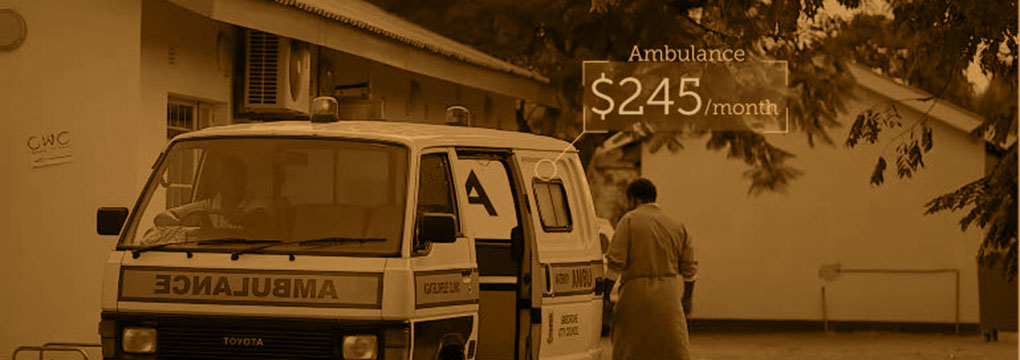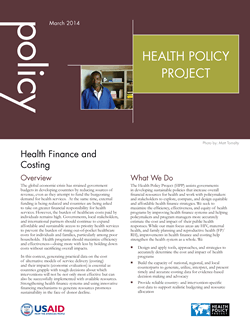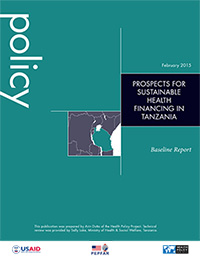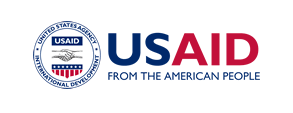The Health Policy Project ended in 2016. Work continued under Health Policy Plus (HP+) until 2022.
Health Finance and Costing

Health Policy Initiative
Overview
The global economic crisis has strained government budgets in developing countries by reducing sources of revenue, even as they attempt to fund the burgeoning demand for health services. At the same time, external funding is being reduced and countries are being asked to take on greater financial responsibility for health services. However, the burden of healthcare costs paid by individuals remains high. Governments, local stakeholders, and international partners should continue to expand affordable and sustainable access to priority health services to prevent the burden of rising out-of-pocket healthcare costs for individuals and families, particularly among poor households. Health programs should maximize efficiency and effectiveness—doing more with less by holding down costs without sacrificing overall impacts.
In this context, generating practical data on the cost of alternative models of service delivery (costing) and their impacts (economic evaluation) is essential as countries grapple with tough decisions about which interventions will not be not only most effective but can also be successfully implemented with available resources. Strengthening health finance systems and using innovative financing mechanisms to generate resources promotes sustainability in the face of donor decline.
What We Do
The Health Policy Project (HPP) assists governments in developing sustainable policies that increase overall financial resources for health and work with policymakers and stakeholders to explore, compare, and design equitable and affordable health finance strategies. We seek to maximize the efficiency, effectiveness, and equity of health programs by improving health finance systems and helping policymakers and program managers more accurately estimate the cost and impact of their public health responses. While our main focus areas are HIV, maternal health, and family planning and reproductive health (FP/RH), improvements in health finance and costing help strengthen the health system as a whole. We
- Design and apply tools, approaches, and strategies to accurately determine the cost and impact of health programs
- Build the capacity of national, regional, and local counterparts to generate, utilize, interpret, and present timely and accurate costing data for evidence-based decision making and advocacy
- Provide reliable country- and intervention-specific cost data to support realistic budgeting and resource allocation
- Encourage the integration of economic analysis into budgeting and planning processes
- Generate data on the cost of health services for key populations, such as men who have sex with men and female sex workers
- Collaborate with stakeholders to identify resource restraints and funding gaps
- Help mobilize the financial, human, and material resources needed to carry out health policies and programs
- Work to improve systems for tracking allocation and expenditures
- Build host-country capacity to generate and use economic analysis for health financing
Sustainable Financing
As international donor funding for HIV begins to plateau and resources are focused on the most urgent needs, countries must identify sustainable alternative (non-donor) resources for HIV. The USAID- and PEPFAR-funded Health Policy Project (HPP) works with host-country governments and stakeholders in five PEPFAR-supported Bold Vision countries[1] to assess the current country-specific health financing landscape and work toward a more sustainable environment for HIV financing. HPP has developed a framework to measure each country’s current level of non-donor alternative resources, its potential to mobilize additional funds for HIV services, and the resulting overall level of need, referred to as the resource gap. The project is committed to working with host governments and stakeholders to generate policy actions for sustainable financing, such as establishing dedicated budget line items, special levies, or health funds; increasing private sector contributions; or improving allocation and efficiency.
[1] Kenya, Tanzania, Zambia, Uganda, and Mozambique
Supporting “Next-Generation” Health Financing Policies
Governments in developing countries recognize the need to create alternative financing strategies to pay for healthcare costs and ensure access to health services for a new generation of young families. HPP support helps governments explore different policy choices to achieve this goal. We provide critical analyses and primary data from household and facility surveys that help generate healthcare financing policies for poor populations who may not otherwise be able to participate in forms of health insurance. We also provide assistance to health secretariats, who coordinate consultations with an array of stakeholders and oversee the health financing policy process.
Costing and Evaluating Programs and Services
Accurate data on the costs associated with HIV, FP/RH, and maternal health policies and programs are crucial to maximizing efficiency and effectiveness. This information enables decisionmakers to understand the costs of a strategy or program and set more realistic budgets. Economic evaluation and analyzing cost-effectiveness also allows decisionmakers to reliably weigh the potential costs and impacts of different program designs and resource allocation scenarios. Integrating costing into the planning process helps avoid disconnects between policy goals and resource allocation, which undermine effective implementation of health policies and services.
HPP’s costing work is threefold: we generate cost data; design tools, approaches, and strategies to improve the generation of cost data; and build local capacity to generate and use cost data.
Championing Efficiency and Effectiveness in National Health Programs
HPP works to maximize the efficiency and effectiveness (E²) of national health and HIV programs. Our goal is to craft an E² methodology that helps close the gaps in financing and program results. At the country level, HPP compiles evidence of what has worked in E², models the potential effect of changes to interventions and the mix of strategies, and applies those evidence-based solutions to the program. This approach provides clear and tangible actions for making national health programs more efficient and effective. At the global level, we seek to provide evidence demonstrating the importance of using an E² approach.
Learn more about HPP's efficiency and effectiveness approach
Mobilizing Resources
While helping countries make the most of available resources, HPP also contributes to resource mobilization. We support the adoption of innovative health financing mechanisms, help decisionmakers and advocates identify and address financing gaps, and design and apply tools and models to demonstrate the social and economic impacts of increasing investments in HIV, FP/RH, and maternal health. We also build host-country capacity in advocacy and policy dialogue to support future resource mobilization efforts.
News
New Research in Eastern and Southern Africa Shows High Quality Voluntary Medical Male Circumcision Can Be Implemented Effectively and At Scale
A new collection of 13 research studies, featured in PLOS ONE and PLOS Medicine and funded by the U.S. President’s Emergency Plan for AIDS Relief (PEPFAR) and the Bill & Melinda Gates Foundation, provides evidence from five African countries that safe, high quality voluntary medical male circumcision (VMMC) services performed by trained healthcare professionals in low-resource settings can be implemented and sustained at scale and have the potential to significantly prevent new HIV infections in adolescent and adult men.
The Most Important Meeting in Town
Why was the Universal Health Coverage (UHC) meeting the “most important meeting in town”? Because both the World Bank and IMF know that without a healthy population, the goals of poverty reduction and shared prosperity will never be achieved?.
Leaders Discuss Universal Coverage at Health Financing Summit in Kenya
Multisectoral discussion aimed at building consensus for new finance strategy to reduce out-of-pocket expense for healthcare for citizens.
Ethiopian Health and Population Professionals Learn to Use Software Tools for Analyzing Policies and Programs
Workshop strengthens capacity in applying data from modeling systems to build evidence-based decisionmaking and advocate for increased resources to improve health
Publications and Resources
Cost of Providing Oral Pre-Exposure Prophylaxis to Prevent HIV Infection Among Sex Workers in Kenya
In collaboration with the National AIDS and STI Control Program and the Sex Worker Outreach Program, the Health Policy Project conducted a study to address the following questions: How much does it cost to provide oral PrEP to one sex worker for a year? And, how much would it cost to scale up oral PrEP to all sex workers country-wide?
Costed Implementation Plans for Family Planning
HPP, with various partners, has developed a collaborative, 10-step approach to creating a costed implementation plan (CIP) that aligns with ongoing government planning and coordination efforts. This brief outlines these 10 steps, which when implemented, should result in a consensus-driven strategy, roadmap, and budget for achieving family planning targets under the Ouagadougou Partnership, FP2020, and/or other national programs.
Strategic Budgeting Process for Scale-Up of Family Planning: Costed Implementation Plans (CIPs) for Family Planning
This booklet highlights the methodology behind CIPs, walks through 10 steps for designing and implementing a national CIP for family planning, and shares experiences from seven African countries that have developed national CIPs for family planning to inform their decision making.
The Cost of Saving Lives (video)
As funding for global health changes, it is imperative that policymakers and program planners understand the cost of implementing HIV and AIDS programs. The data generated by costing and economic analyses inform critical resource allocation decisions, identify opportunities for increased efficiencies to do more with less, and support smart investments in HIV and AIDS programs. In the end, costing and economic analysis done right can improve health outcomes and save lives. This film was produced by the Health Policy Initiative (HPI) with support from the United States Agency for International Development and the President’s Emergency Plan for AIDS Relief.
Health Policy Project Finance and Costing Activities and Accomplishments - 2012
Goals Model
The Goals Model is a software model intended to support strategic planning at the national level by providing a tool to link program goals and funding.
Costing and Budgeting Tools at the Decentralized Level: State of the Art
Presentation on tools used to estimate costs to reach a specific goal or to expand or upgrade services.
Crosswalk of Family Planning Tools: A Guide to Costing, Planning, and Impact Analysis Tools
A guide which provides a comparison of 18 commonly used family planning costing, planning, and impact analysis tools.
Health Policy Initiative Costing Task Order
Project to generate data on cost-effective interventions for health services and programs to support evidence-based decision-making.



